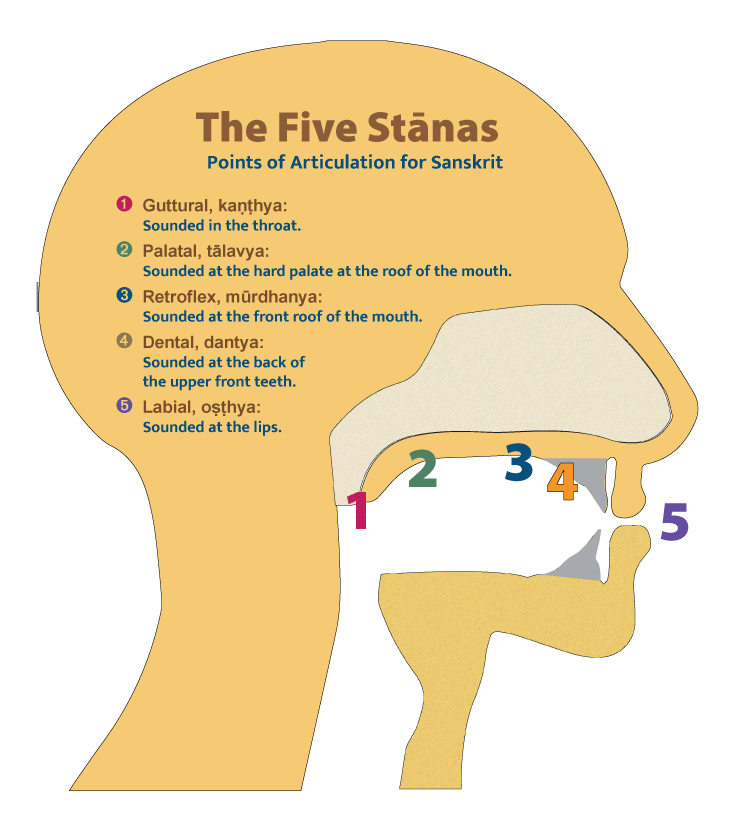Phonetics in Sanskrit
Introduction
- Phonetics is the starting point for language, especially for cultures with a strong oral tradition.
Oral Tradition and the Vedas
- The Vedas, transmitted orally for thousands of years, have survived due to scientific methods of oral rendering.
- The preservation of pronunciation indicates the development of a science of phonetics.
- Good phonetics ensured impeccable textual transmission, surpassing classical texts of other cultures.
UNESCO Recognition
- Vedic scriptures, transmitted orally, are unique.
- UNESCO recognized the Vedas as a Heritage for preservation in the form of Oral Knowledge.
Phonetics in Indian Knowledge Tradition
- The study of sounds in a language, particularly sound production and communication, is part of phonetics.
- In the Indian knowledge tradition, the science of sound study is known as Shiksha, one of the six Vedangas.
Pratishakhyas
- The IKS Corpus includes Pratishakhyas, which address the issue of how sounds are produced.
- Rigveda Pratishakhya and Taittiriya Pratishakhya are the earliest works on the subject.
- They lay down the rules of phonetics.
Panini and Phonetics
- Panini discussed phonetics in Ashtadhyayi through sutras.
- He also created a separate addendum known as Paniniya Shiksha.
- According to Panini, the origin of sounds is specific to the letters (varnas) in Sanskrit.
Origin of Sound in Oral Cavity
- Six locations in the oral cavity are identified as sound origins.
- Sounds originate from these locations or a combination thereof.
- These areas include the nasal area, palate, lips, and throat.
- All of these are involved in the production of various varnas.
Example: Kantha (Throat)
- The Kantha (throat) generates sounds like "a", "k", "kh", "g", "gh", "ha".
Paniniya Shiksha
- It details how to pronounce sounds and their origins.
- Includes aspects like nasal sounds (m, n, n).
- Recognizes articulatory effort: throat, nose, palate etc.
Vowel Variations
- According to Panini, vowels (a, i, u, e, o) have 18 possible variations categorized as:
- Hrasva: Short
- Dirgha: Long
- Pluta: Extended (held for 1, 2, or 3 counts)
Svaras
-
Three types of Svaras(tones) are specified:
- Udatta: Raised Tone
- Anudatta: Unraised Tone
- Svarita: A combination of the two
-
There are three possible variations:
- Same level (sound from the earlier variation is the same level).
- Raised(sound from the earlier variation is braced).
- Lowered(sound from the earlier variation is braced).
Nasal and Non-Nasal Sounds
- He talks about Nasal and Non-nasal sounds:
- a is nasal
- a, i is not nasal
- i, ii, is nasal you have to use your nose also in making the sound i
Alpaprana and Mahaprana
- Consonants are categorized as:
- Alpaprana: Little air (e.g., k).
- Mahaprana: More air (e.g., kh) *When you say the th, if you put your hand in front of your tongue you will find a lot of air will blow. If you say k no air will blow
Efforts in Analysis
- Identifying the place of pronunciation and the required articulatory effort involved a lot of effort, observation, and analysis.
- Panini took all of this into consideration.
- The recitation of Vedas is the gold standard for phonetics and preservation.
Benefits of Good Phonetics
- Accrued benefits from good phonetics in a language.
- Possible to impart good phonetical training to language aspirants.
- Closely monitor and rectify phonetical inaccuracies.
- Arrest deterioration of pronunciation over time.
- Ensures preservation and transmission of language components through oral tradition.
Summary
- The greatest contribution of the Indian Knowledge System in linguistics is through Shiksha.
- Panini accommodated all of these elements into his grammatical work, Ashtadhyayi.


No Comments